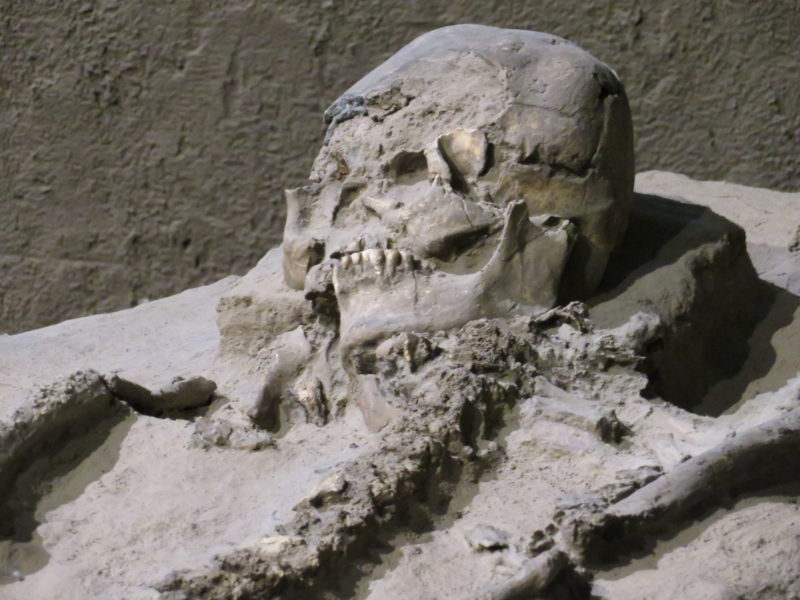
DCMX has more museums than any other city in the world with the exception of London, or so I am told. Today I am providing a glimpse of three of them, as different from each other as can be and yet linked by a common theme, how to deal with the dead.

Here is the home of Trotzky during his short exile. The museum is a modest affair, house and grounds pretty much left untouched, down to the rabbit cages since the time of his assassination. A small modern gallery has been added, exhibiting permanent historical photographs and changing contemporary political shows. The vibe is one of simultaneous veneration and resignation, and gratitude if a small percentage of the multitudes visiting the nearby Frida Kahlo residence is willing to take a small detour.

An important man lived and died here, a Marxist revolutionary, leader of the communist party after the October revolution, head of the Fourth International, enemy of Stalin. Several attempts on his life failed, until one didn’t – in 1940 a soviet agent killed him with an ice axe. You wouldn’t know it; despite the grave in the garden, the delapidated place exudes a kind of peacefulness, languor or even indifference.




The contrast could not be larger when entering the Museo Nacional de Antropología e Historia – INAH,

It is an architectural marvel, a glorious memorial to a diverse past, and filled with awe-inspiring collections. It is also, quite frankly, overwhelming. The kind of place that you can only truly get to know if you live nearby and have unlimited time to visit.



Exhibits are in chronological order of Mexican civilizations, more or less, spread out counterclockwise around a central courtyard with water features. Each individual exhibit also has their own, smaller courtyard. They surround the building from the outside, buffering it from the world and providing tranquil panoramas of how people lived through the centuries. Guides hover, groups scurry around, multitudes of people are entranced in the offerings of the showcases.



And here, in some important ways, death is the centerpiece, with so much collected evidence of sacrifices, death celebrations, death battles and games, and skulls where ever you look. Since I am no historian and know nothing about Mexican culture I am offering three accounts of the preoccupation with La Muerta found at various sources. They seem to overlap and paint an interesting picture.


http://www.huffingtonpost.com/sandra-cai-chen/mexico-death-comfort_b_8775574.html
https://www.theguardian.com/commentisfree/belief/2010/nov/02/mexican-celebrate-day-of-dead
The third museum I visited, the university’s museum for contemporary art, http://muac.unam.mx, is lodged somewhere in-between. It, too, is modern and architecturally successful. It is the perfect space to exhibit contemporary art, with dark caves, media theatres and huge, bright, airy spaces.



Hard to describe how intensely one of the current exhibits, Jill Magid’s A Letter Always Arrives at Its Destination. (The Barragán Archives) drew me in.
The website blurb says: Jill Magid brings together the divergent strands of the personal and professional archives of the Architect Luis Barragán, encompassing the complex intersections between the psychological and the judicial, between authorship and property, and between the human body and the body of work. With this project, the MUAC opens up a political and ethical debate on the current and future conditions of the transferal of cultural heritage from a model of the nation-state to one of corporate institutions.
I say: this was about 2 women fixating on a dead guy they had never met, an ensuing cat fight, exhumation, transformation of the ashes, legal threats, claims about the notions and to the rights of exclusivity, question about who are the rightful heirs to the papers of any one national – in sum, utterly terrific, intelligent, thought-provoking conceptual art. Showing how how a body of work, art can transcend death, on so many levels. Weak in the knees just thinking about it, jealous, too.
Here is the long version which reads like a thriller:
http://www.newyorker.com/magazine/2016/08/01/how-luis-barragan-became-a-diamond
This show did not lend itself to being photographed, and in some ways my brain was too busy processing the information to have room for arranging shots. Just as well. Theory, no action, this time. (Exhibit title below says: Theory as Action.)







Martha Ullman West
I was at the Anthropologie Museum not very long after it opened in 1968, visited three times in the week we were in Mexico City with my mother and my godfather, a clinical psychologist who was very interesting (and amusing!) about some of the contents. Thank you for these marvelous photographs, particularly of the Trotsky museum, where I’ve not been.